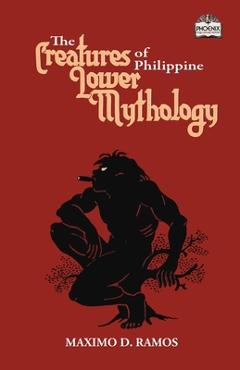The Aswang Complex in Philippine Folklore - Maximo D. Ramos

Detalii The Aswang Complex in Philippine
libris.ro
104.55 Lei
116.17 Lei
Social Science
Maximo D. Ramos
The Aswang Complex in Philippine - Disponibil la libris.ro
Pe YEO găsești The Aswang Complex in Philippine de la Maximo D. Ramos, în categoria Social Science.
Indiferent de nevoile tale, The Aswang Complex in Philippine Folklore - Maximo D. Ramos din categoria Social Science îți poate aduce un echilibru perfect între calitate și preț, cu avantaje practice și moderne.
Preț: 104.55 Lei
Caracteristicile produsului The Aswang Complex in Philippine
- Brand: Maximo D. Ramos
- Categoria: Social Science
- Magazin: libris.ro
- Ultima actualizare: 28-10-2025 01:22:05
Comandă The Aswang Complex in Philippine Online, Simplu și Rapid
Prin intermediul platformei YEO, poți comanda The Aswang Complex in Philippine de la libris.ro rapid și în siguranță. Bucură-te de o experiență de cumpărături online optimizată și descoperă cele mai bune oferte actualizate constant.
Descriere magazin:
The Aswang Complex in Philippine Folklore: With Illustrative Accounts in Vernacular Texts and Translations.This book is a bold attempt to present to the reader and to students of Filipino society and culture one of the dominant Filipino beliefs, the aswang. For some strange reason the belief has never been explored for its usefulness in the field of literature or social studies. Even educators shy away from it, branding the belief as superstitious and therefore hot to be perpetuated. While this view is entertained, however, there is continued use in the schools-including the nursery schools-of Western tales like Hansel and Gretel, \'Rapunzel, Snow White, and so forth, dealing with witches, dwarfs, and other people of lower mythology. It is sad to note that while we accept these stories as entertaining to our children, we reject our own folktales about equivalent characters as superstitious and undesirable.It is about time that we changed our perspective, that we accepted our own literary heritage and used it if we are to make education meaningful to our children. Maximo D. Ramos has provided us with one way to achieve this. Of course the present volume is only one of his many works on Philippine folklore.While he presents the materials in this book as folklore, these can also be regarded as ethnographic data in that they deal with one of the dominant aspects of Filipino folk culture. The aswang belief may be viewed as socially functional in many communities. Our own field notes on the subject matter indicate that aswang tales are used by many people as a medium of social control. For example, when a child frets at night or becomes unruly during the day, adult members of the family or sibling caretakers generally use the aswang belief as a means of quieting the child or of disciplining him. When one wishes to protect his fields from unnecessary trespass by others, all he has to do is make it known that an aswang haunts the place and no one will dare enter the premises, especially at night. Deviant behavior is also handled through avoidance, and the aswang label is handy for this purpose. Once the label is set, deviants are either coerced into conformity to what is acceptable behavior or are effectively deprived of their legitimate status in the community.Thus seen, it is understandable that the aswang belief has persisted in our society over such a long period of time.

Produse asemănătoare

The Aswang Complex in Philippine Folklore - Maximo D. Ramos
![]() libris.ro
libris.ro
Actualizat in 28/10/2025
104.55 Lei
Produse marca Maximo D. Ramos

The Aswang Complex in Philippine Folklore - Maximo D. Ramos
![]() libris.ro
libris.ro
Actualizat in 28/10/2025
104.55 Lei

Legends of Lower Gods: Stories About Creatures From Philippine Mythology & Folklore - Maximo D. Ramos
![]() libris.ro
libris.ro
Actualizat in 28/10/2025
104.55 Lei

The Creatures of Philippine Lower Mythology - Maximo D. Ramos
![]() libris.ro
libris.ro
Actualizat in 28/10/2025
174.17 Lei

The Creatures Of Midnight: Mythical Beings from Philippine Folklore - Maximo D. Ramos
![]() libris.ro
libris.ro
Actualizat in 05/06/2025
90.6 Lei

Tales of Long Ago in the Philippines - Maximo D. Ramos
![]() libris.ro
libris.ro
Actualizat in 05/06/2025
104.55 Lei